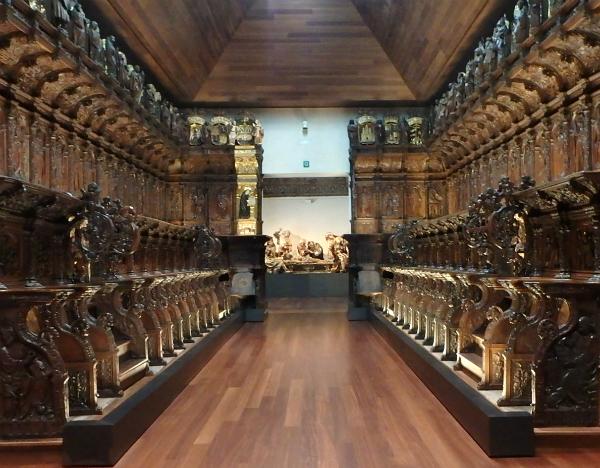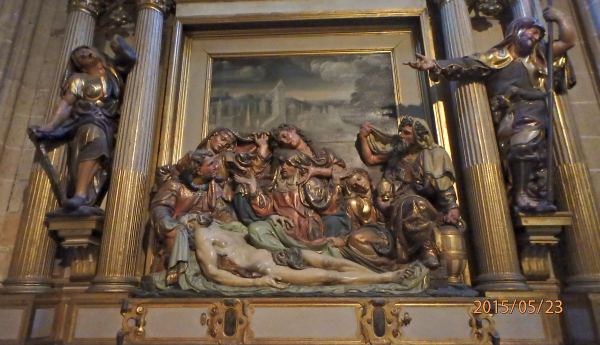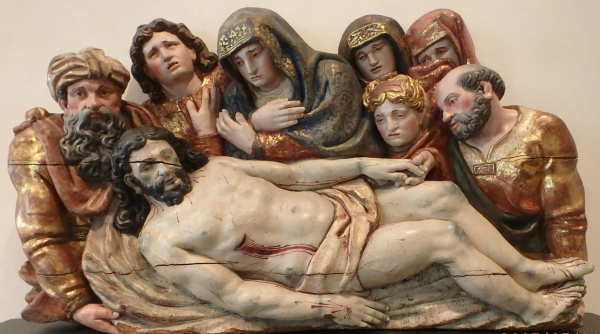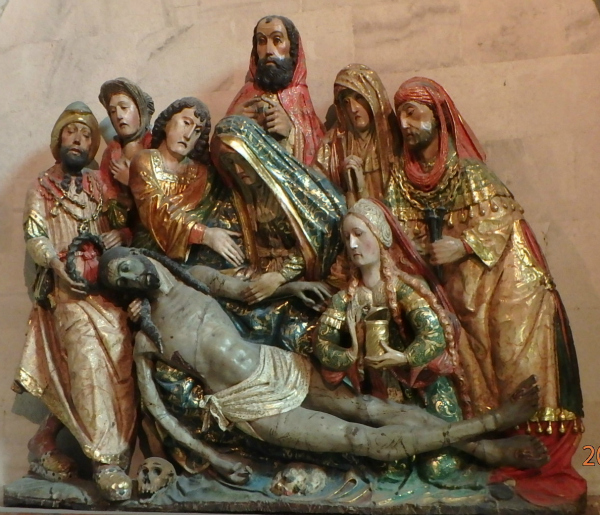 Earlier this year, I made an art pilgrimage to Valladolid, the home of Spain’s National Museum of Sculpture. So much Spanish Renaissance and Baroque sculpture resides and stays in Spain, sometimes because it can’t leave and sometimes because there is no demand to borrow it, and I had felt remiss in not having seen enough Spanish Old Master Sculpture.
Earlier this year, I made an art pilgrimage to Valladolid, the home of Spain’s National Museum of Sculpture. So much Spanish Renaissance and Baroque sculpture resides and stays in Spain, sometimes because it can’t leave and sometimes because there is no demand to borrow it, and I had felt remiss in not having seen enough Spanish Old Master Sculpture.
I particularly wanted to see Juan de Juni’s The Burial of Christ, which I had proposed for the Masterpiece column that runs every Saturday in The Wall Street Journal. It was an easy sell. And my piece, headlined A Tableau Animated by Grief, ran this past weekend.
But among the public, I think Spanish Renaissance and Baroque art is a hard sell. It’s too religious, too unflinching for these secular times, some say. I didn’t like all the blood either. But, as I wrote in the Masterpiece column, I am now a convert. Just take a look at what Juni’s ensemble, six figures surrounding the dead Christ (detail above), looks like. It is spectacular. (You can see two additional close-ups here.)
The museum in Valladolid was a real treat because it tells a long and beautiful story, and–best of all–it tells it in a way that allows comparison among artists. You can easily contrast Juni (c. 1507–1577) with the other major sculptor of this era, Alonso Berruguete (1488–1561). Berrugete is represented there by a massive, multi-section altarpiece, one fragment of which I have posted here at right.
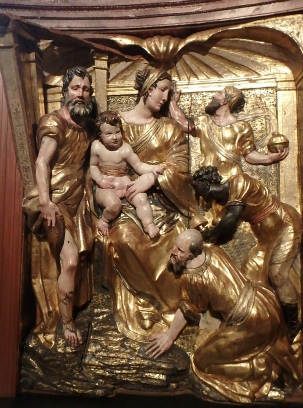 As it turned out, the WSJ had already published a Masterpiece column on a sculpture called The Sacrifice of Isaac in 2014. You can read that article and see the piece here.
As it turned out, the WSJ had already published a Masterpiece column on a sculpture called The Sacrifice of Isaac in 2014. You can read that article and see the piece here.
But that was all right with me. In Valladolid, I realized that I had chosen the right guy. While I was there, I spoke with the museum’s subdirector, Manuel Arias MartÃnez, about the two. He had pointed out their similarities and their differences. Berruguete, he said, was a painter as well as a sculptor and had worked quickly in a refined, elegant Mannerist style. Juni, purely a sculptor, slowly and carefully carved his pieces in a more detailed, more realistic style.
Then he said the best line: “Berruguete’s sculptures are to see. Juni’s are to pray.†True—overall—but I think Juni’s The Burial of Christ surely does double duty.
At the museum, Berruguete’s art takes up a long gallery and more on the ground floor. Upstairs, after a couple of small galleries, Juni’s sits at the end of a long, beautifully carved set of choir stalls. Here’s what that looks like:
Juni had carved a similar version of the burial for the Segovia cathedral, so naturally I also went there to see what that looked like. For one, it has some of the outer structure of the sculpture that, in Valladolid, has been lost. It’s also, obviously, more of a relief than a sculpture.
And just for your comparison, here are two more entombment scenes that I saw in Spain–nice but not Juni.


